Last Updated on December 17, 2025 by Hannah Stephenson
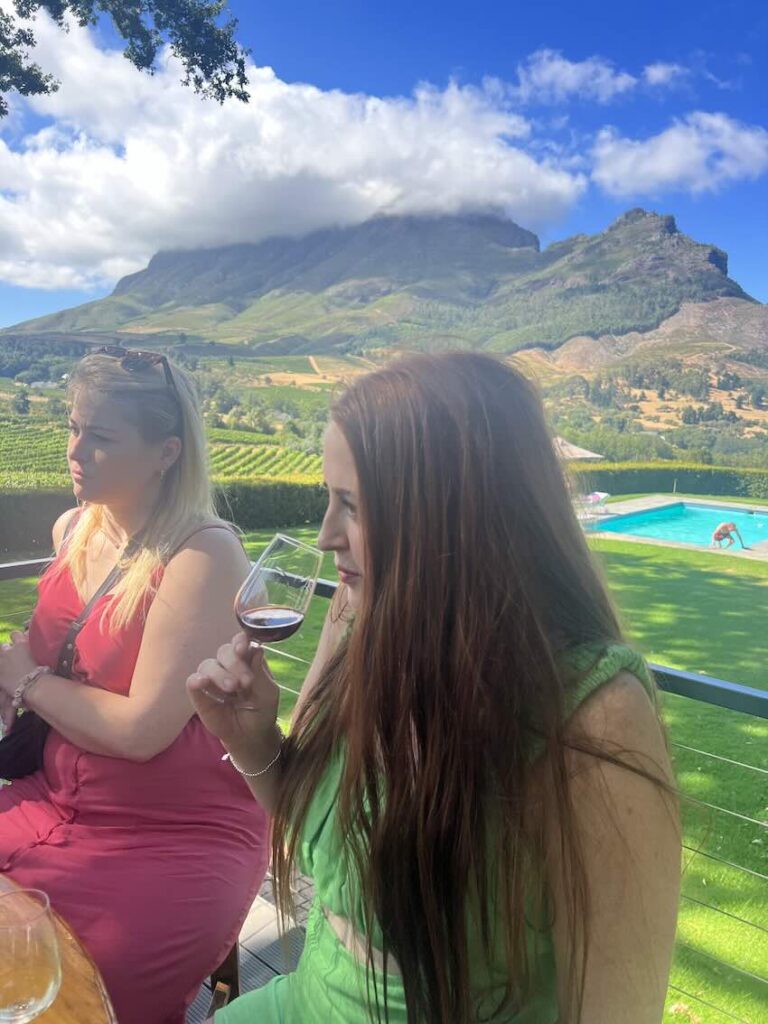

Wine tasting is a quintessential Cape Town activity. The Western Cape is famous for its wine, so it would almost be rude not to visit one of the area’s fantastic wine routes while you’re here!
There are four main wine regions in and around Cape Town, and I’ve had the pleasure of visiting each one several times. It’s a tough job, but somebody’s gotta do it! Now, I’ve written this insider guide to help you plan your own wine tasting adventures.
In this article, I’m going to focus on taking day trips to these areas from the city rather than doing overnight stays in the winelands. I’ll give you an overview of each region, highlight my favourite wineries, and share the best ways to explore without the need for a designated driver. Let’s get into it!
Where to Go Wine Tasting in Cape Town
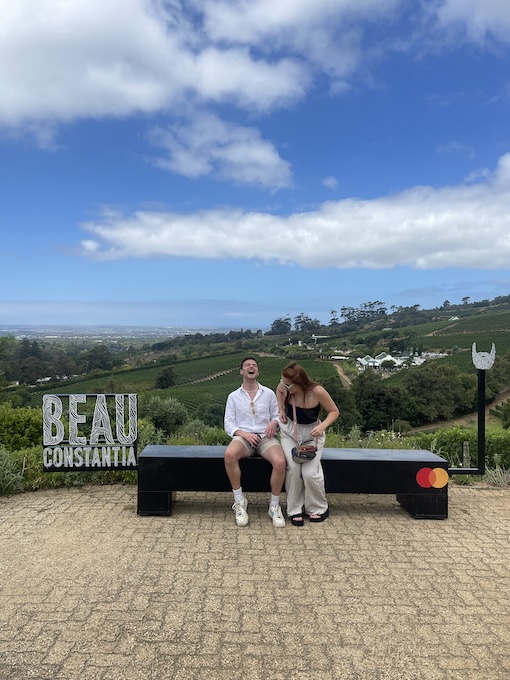
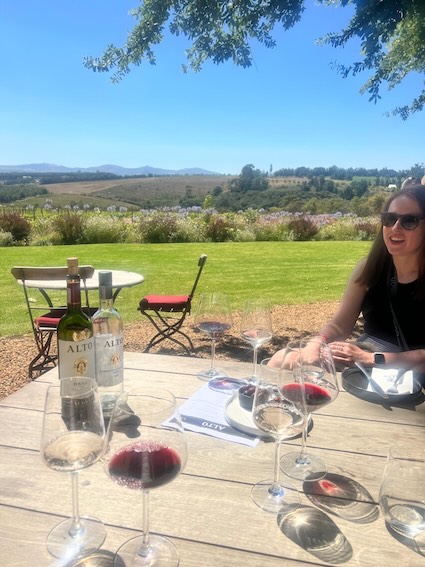
There are four main wine regions to explore around Cape Town, namely:
- Stellenbosch
- Franschhoek
- Constantia
- Durbanville
Stellenbosch and Franschhoek are definitely Cape Town’s most famous wine regions. They’re located close together, about an hour from Cape Town. They’re their own separate municipalities, while Constantia and Durbanville are suburbs of Cape Town.
The latter two are definitely quieter but they are just as worthy of a visit, so don’t discount them!
Getting to the Winelands
Now, you can usually take an Uber to and from these areas just fine but Uber is not a very convenient way of getting between the wineries. It can often take a while to find a driver who will accept a short trip out in the winelands, and signal can be patchy on some of the farms.
Fortunately, each region has its own little transport system set up to help visitors explore the different wineries without a car. I’ll explain them all below!
Stellenbosch
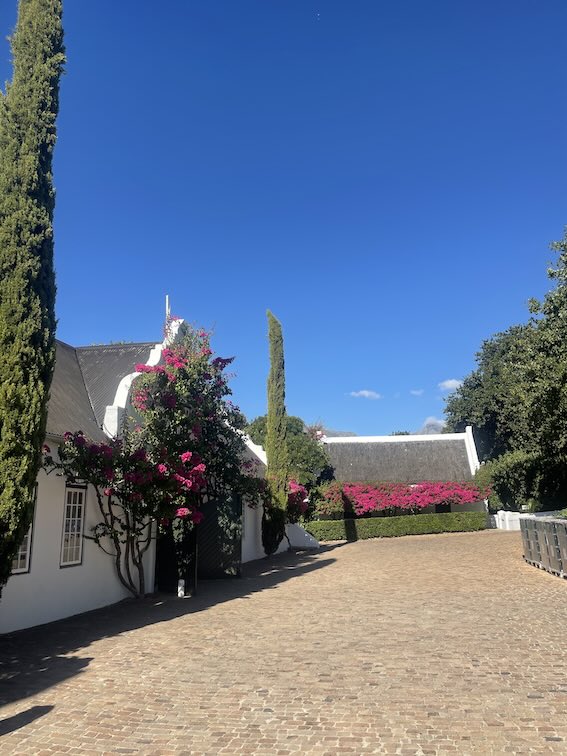

Stellenbosch is a cute university town filled with white Cape Dutch buildings, and it’s surrounded by wine farms! In fact, a lot of Cape Town’s biggest selling wine brands have farms out here, including Spier and Simonsig.
I’ve got a 2 or 3 day Stellenbosch itinerary here if you have time to stay for a few nights, but if not no worries because it’s easy to do a day trip from Cape Town. In fact, it’s only a 45-minute drive away!
My favourite wineries here include Alto, Peter Falke, and Waterford. And as for the best way to explore, that would have to be on the Stellenbosch wine tractor!
The Stellenbosch Wine Tractor
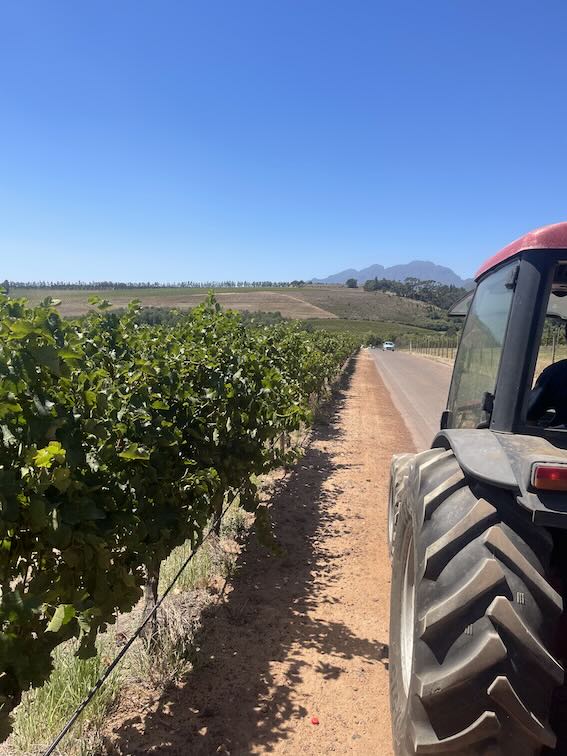

The Stellenbosch wine tractor is a relatively new hop-on hop-off wine tasting experience. It launched in 2024, but it has quickly gained popularity because it makes it so easy to go wine tasting in Stellenbosch without the need for a sober driver.
Of course, I had to try the wine tractor out for myself and you can read my full review of the experience here. But basically, it was a super fun day out and I loved it because it felt really relaxed and not at all rushed.
You can book the wine tractor tour to start between 9:30 am and 12:30 pm. Your start time doesn’t affect when the tour finishes. The last tractor of the day gets back to Eikendal at 6:35 pm, but you can always head back earlier if you wish!


We booked the tour for 10:30 am and visited four wineries, with plenty of time at each. The tour starts at Eikendal Vineyards and you can either take an Uber there and back or arrange transport with the company after booking. To be honest, Uber will probably work out cheaper.
Once you get to the vineyards, you’ll get a welcome glass of rosé and you’ll have time to chat to the staff about which wineries you want to visit. Once you’ve decided, they’ll tell you which tractor to hop on, and away you go! I definitely recommend visiting Alto and Peter Falke, as they’re both very beautiful.
Read all the 5-star reviews and book the Stellenbosch wine tractor here, with free cancellation!
Franschhoek


Franschhoek is famous – or should that be infamous? – for its wine tram!
The Franschhoek Valley is about an hour from Cape Town, and as far as I know it’s home to the only wine tram in the world. Pretty cool, huh?
There are tons of wineries in Franschhoek, and the tram has several different routes you can take. The Navy Line is the best one I’ve tried but to be honest, it doesn’t matter too much which route you take.
And if you fancy staying for a few nights, I’ve got the perfect 3-day Franschhoek itinerary here.
The Franschhoek Wine Tram


As far as I’m concerned, the wine tram is really the only way to do Franschhoek! And if you’re coming from Cape Town, I highly recommend booking the wine tram explorer tour, which includes tram tickets and return transport between Cape Town and Franschhoek.
You can read my full review here, but I think that this is the easiest and most affordable way to experience the Franschhoek wine tram from Cape Town! The bus leaves from the V&A Waterfront at 8:30 am, so it’s a bit of an early start but I promise it’s worth it.
There’s commentary on board and you’ll get some info on the different wineries. Then, when you get to Franschhoek you’ll hop on the tram and enjoy a welcome glass of wine as you head to your first stop of the day.

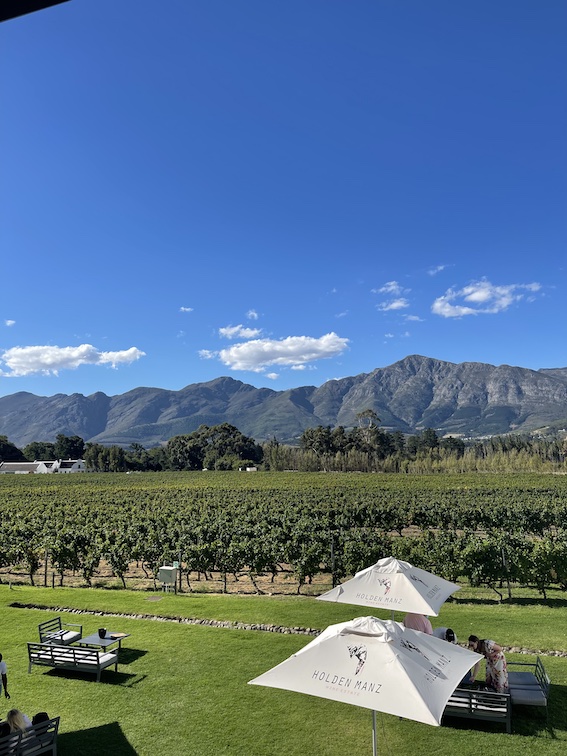
You can then visit up to five wineries over the course of the day, although personally I prefer to stick to four and have a leisurely lunch somewhere. The trams stop at the wineries roughly once and hour and the staff will give you all the timings on the day and let you know when it’s time to go.
With the wine tram tour the route you take does vary depending on the time of year. Sometimes there’s a choice and sometimes there’s not! My advice would be not to stress about it as you’re going to have a blast whichever route you take.
Saying that, if you pick the Navy Line, make sure to visit Bartinney as it’s my all-time favourite wine farm! I also love Plaisir, Vrede en Lust, Le Pommier, and Holden Manz.
Book your spot on the Franschhoek wine tram here!
Constantia
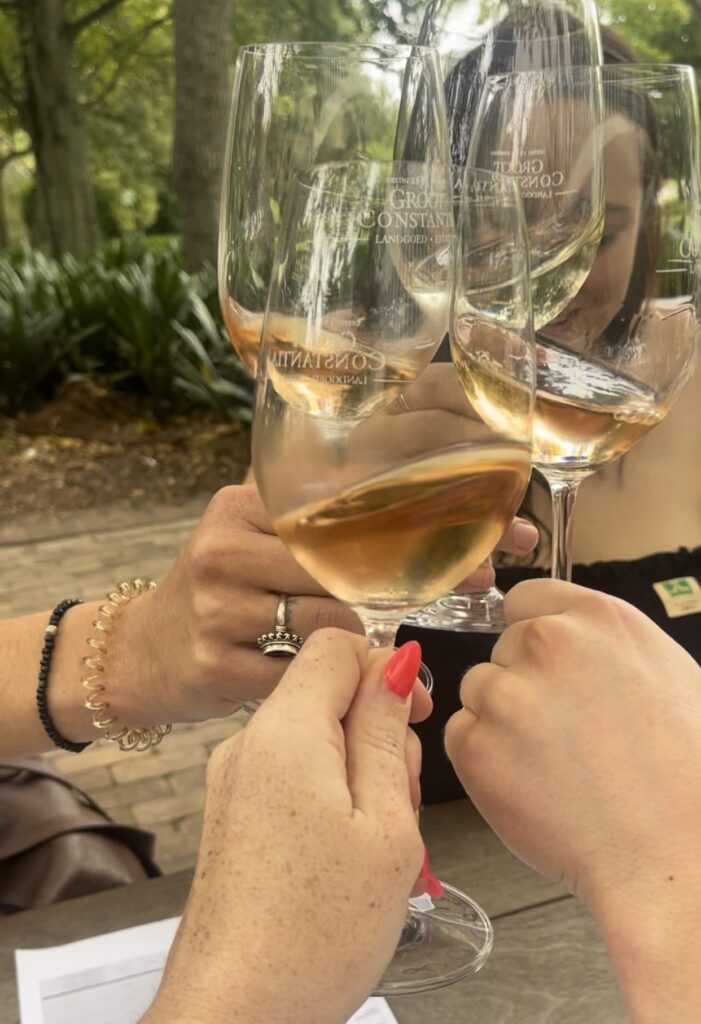

Constantia is an affluent suburb of Cape Town. It’s the home of many wealthy families – and many wine estates! It’s actually home to Cape Town’s oldest wine farm, Groot Constantia, which was established in 1685.
Now, I’m no sommelier, but I think that Constantia has some of the best quality wine in Cape Town. It’s also easy to visit, since it’s close to the city. For that reason, this is the area I’ve visited the most often, as it’s convenient and easy to get to if you just want to do a half-day of tasting.
You can just take an Uber to Constantia if there’s one particular winery you want to visit, but if you want to check out more than one then I recommend using the Constantia wine bus.
The Constantia Wine Bus

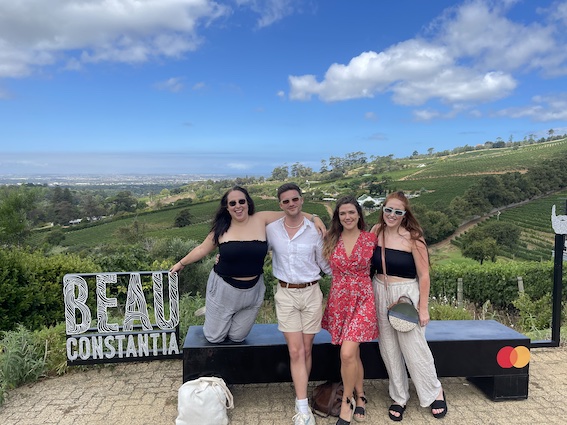
The Constantia wine bus is a fun and flexible way to go wine tasting. Open-top buses run from central Cape Town out to Constantia every 20 minutes from 9 am until 5:15 pm. This gives you a ton of flexibility and it means you don’t have to commit to an entire day of tasting if you don’t want to!
To catch the bus, you’ll need to buy a general ticket for the Cape Town hop-on hop-off sightseeing bus. You can do this online, but you’ll still need to redeem the ticket at one of the pickup points in town – check them here.
The ticket gives you access to multiple sightseeing routes but to go wine tasting, you’ll want to take the Blue route to Constantia, where you’ll then change to a smaller bus that zips between wine farms.
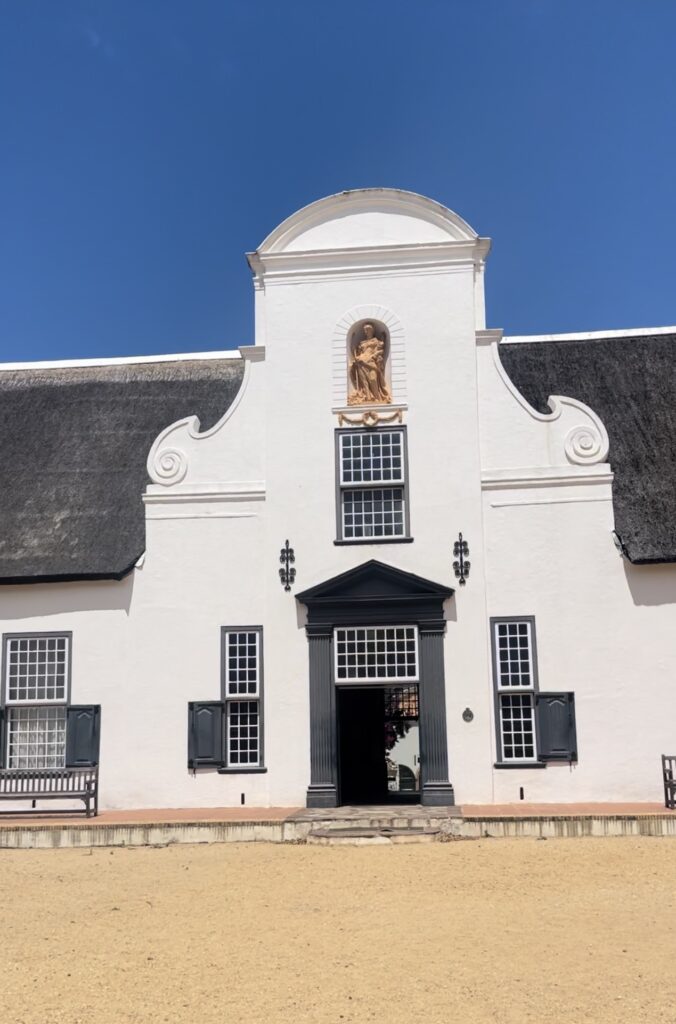
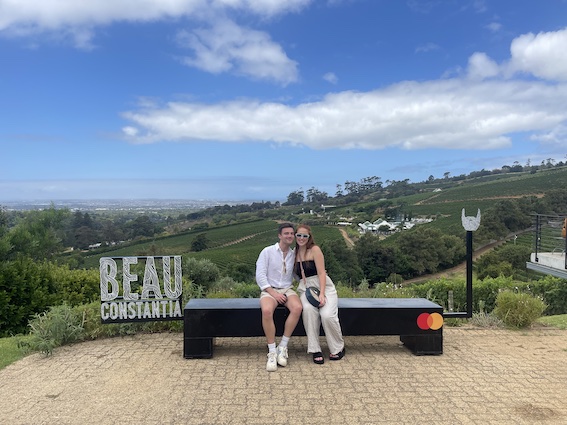
There are three wineries on the route: Silvermist, Groot Constantia, and Beau Constantia. You can read my full guide to the wine bus for a detailed guide on visiting them all, but I’ll give you a few quick tips here.
Basically, I recommend skipping Silvermist if you’re short on time. It’s not that great and the tasting room feels more like a gift shop. Groot Constantia is one of South Africa’s oldest wineries and Beau Constantia is a true knockout, so they are the ones to focus on! It’s a good idea to make a reservation at Beau if you’re visiting during the summer as it’s (understandably) popular.
Book your ticket for the Constantia wine bus here!
Durbanville


Durbanville is one of Cape Town’s northern suburbs. It’s roughly a 30-minute drive from the city centre, and boasts about a dozen wineries.
It’s not as well known as the other areas that I’ve mentioned, but there are some real gems here that are definitely worth exploring.
In fact, this wine route is much less touristy than the others I’ve mentioned, so if you want to go wine tasting like a Cape Town local, this area is perfect!
Best of all, the new Durbanville wine safari is the perfect way to hop between wine farms without the need for a designated driver!
The Durbanville Wine Safari

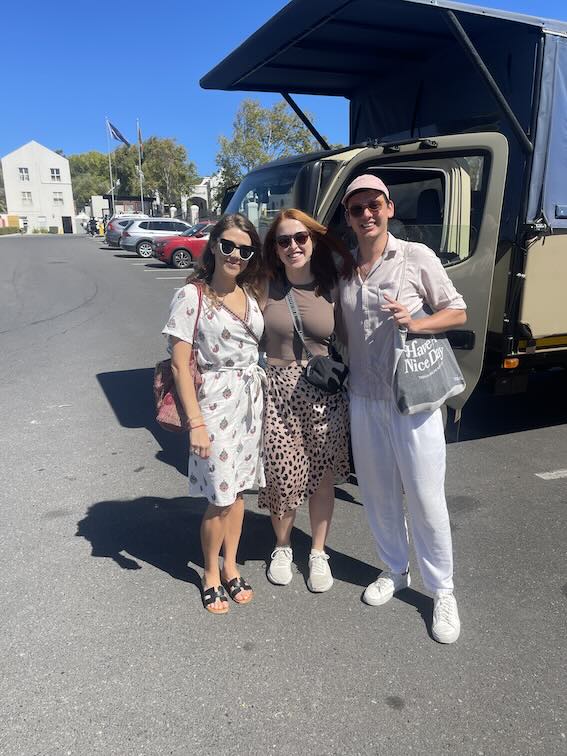
Until recently, there weren’t many wine tours of Durbanville, but now the hop-on hop-off wine safari is here!
It starts at the the Protea Hotel in Durbanville, which is about a 20-minute Uber ride from central Cape Town. From there, takes you to three wineries over the course of the day. You get to pick which ones!
There are usually 2-3 routes to choose from, but I recommend the Southern Line as there are more wineries on offer. When we did this tour, we visited Klein Rosboom, Maastrict, and D’Aria. They were all absolutely wonderful, so I can recommend all three.

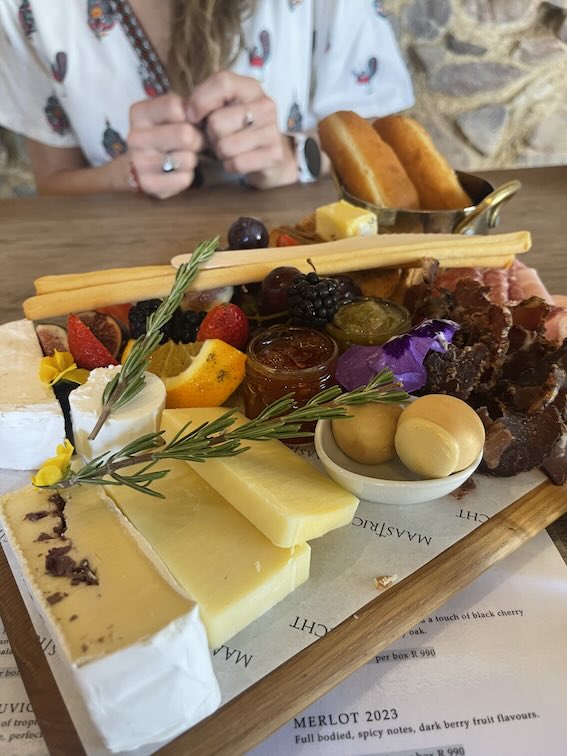
And wherever you choose to go, the guides will just drop you off and tell you what time to be ready for pickup. It’s super easy!
I’ve got a full guide to the Durbanville wine safari here, but basically, it’s a ton of fun and the perfect way to explore Cape Town’s most underrated wine region. The availability changes throughout the year but it’s usually weekends only.
You can check the schedule and book the Durbanville wine safari here!
FAQs about Wine Tasting in Cape Town
How much do tastings typically cost?
Cape Town is known for its fantastic and affordable wine. You really don’t need to spend a ton to find great vino here.
Most tasting fees fall somewhere between R80 and R175. However, I have done tastings that cost as little as R50!
What’s the history of wine in Cape Town?
The first wine grapes were actually planted in Cape Town back in the 1600s by Jan van Riebeeck, the (in)famous Dutch coloniser. Sailors would stop at the Cape of Good Hope on the way along the spice route, and the wine was intended to ward off scurvy!
However, South African wines didn’t receive a lot of international attention until the 1990s when Apartheid came to an end and market boycotts and sanctions were lifted. Since then, the country’s wine industry has caught up pretty fast!
What kinds of wine can I taste?
The Western Cape is particularly known for chenin blanc and pinotage. Lots of international grape varieties thrive here, too, though. The varied terroirs, hilly landscape, sunshine, and cooling ocean breeze mean that an impressive range of wines are produced here.
Should I leave a tip when wine tasting?
Yes, tipping is customary in South Africa. 10% is the minimum but consider leaving 12 – 15% for good service, which is usually what you get here! For more on tipping culture, check out this guide.
